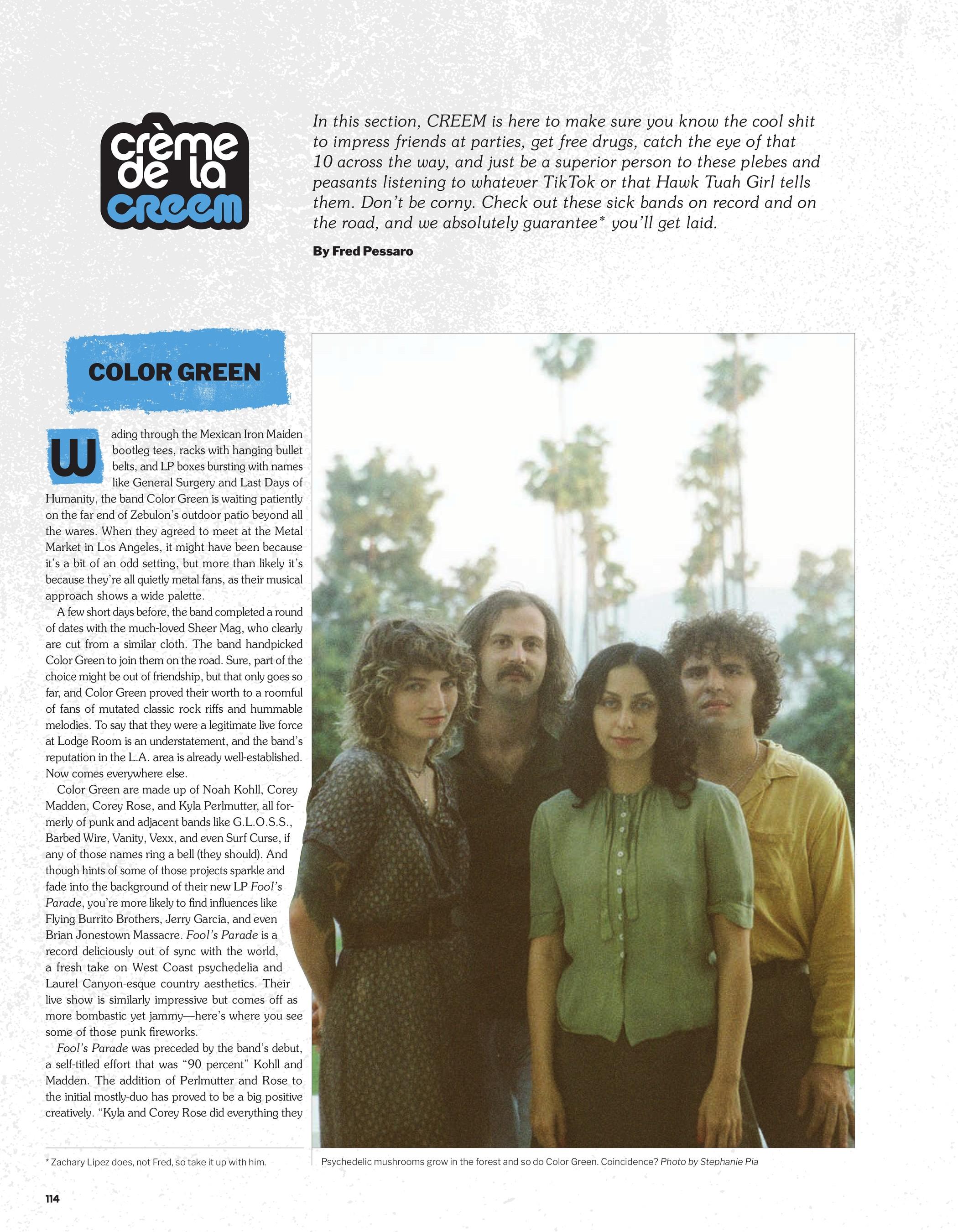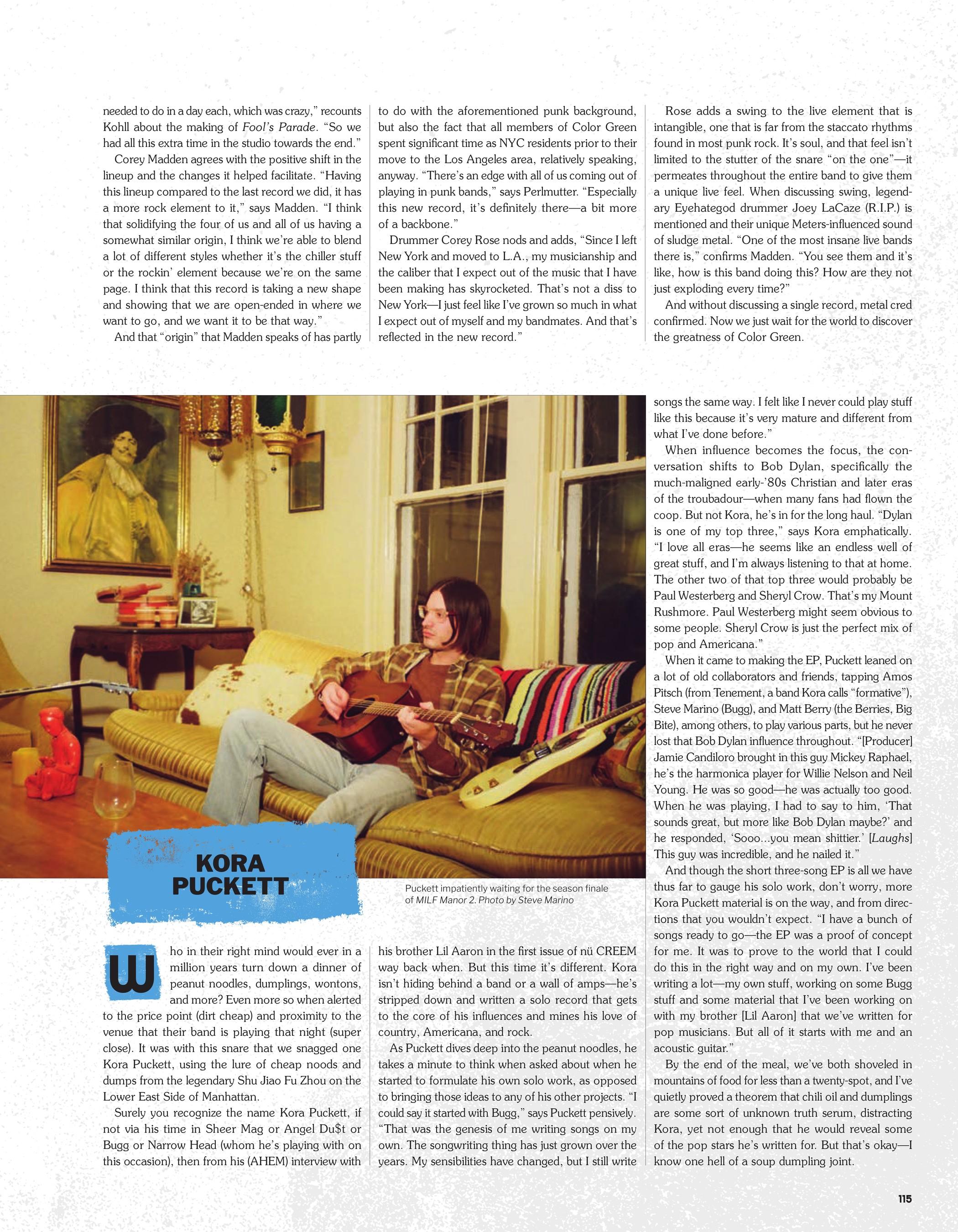Créme de la CREEM
Crème de la CREEM
In this section, CREEM is here to make sure you know the cool shit to impress friends at parties, get free drugs, catch the eye of that 10 across the way, and just be a superior person to these plebes and peasants listening to whatever TikTok or that Hawk Tuah Girl tells them. Don’t be corny. Check out these sick bands on record and on the road, and we absolutely guarantee* you’ll get laid.


COLOR GREEN
Wading through the Mexican Iron Maiden bootleg tees, racks with hanging bullet belts, and LP boxes bursting with names like General Surgery and Last Days of Humanity, the band Color Green is waiting patiently on the far end of Zebulon’s outdoor patio beyond all the wares. When they agreed to meet at the Metal Market in Los Angeles, it might have been because it’s a bit of an odd setting, but more than likely it’s because they’re all quietly metal fans, as their musical approach shows a wide palette.
A few short days before, the band completed a round of dates with the much-loved Sheer Mag, who clearly are cut from a similar cloth. The band handpicked Color Green to join them on the road. Sure, part of the choice might be out of friendship, but that only goes so far, and Color Green proved their worth to a roomful of fans of mutated classic rock riffs and hummable melodies. To say that they were a legitimate live force at Lodge Room is an understatement, and the band’s reputation in the L.A. area is already well-established. Now comes everywhere else.

